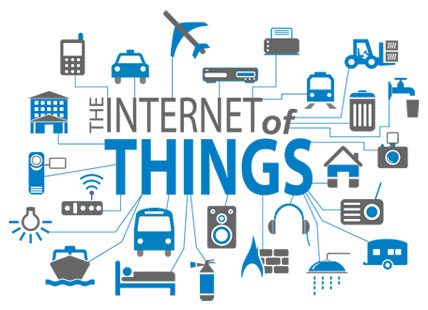(Gary Shapiro) – The internet of things is the future, and Washington’s regulators must recognize it.
Thanks to voice-activated assistants such as Amazon’s Alexa, Samsung’s Bixby and the Google Home, you will soon operate household appliances and devices of all kinds with just your voice. Combine assistants with augmented and virtual reality technology that can help sell products, share news and solve problems, and we’ll experience yet another wave of connectivity and communication.
These examples of “software everywhere” are just a small part of the interconnected internet of things universe of houses, cars, clothes and appliances. And the lightning-fast speed of innovation means our connected devices and the connectivity that links them – all part of the internet of things – are already changing our lives for the better.
Consumers are ready for these changes – U.S. sales of connected devices are projected to reach 600 million units in 2017, according to research from the Consumer Technology Association. But are government regulators ready for this shift to “software everywhere”?
A 2015 Politico investigation revealed that internet-of-things-enabled technologies fall under the purview of at least two dozen federal agencies and more than 30 congressional committees, demonstrating a lack of understanding of the technology – and how to regulate it.
In his first 100 days in office, President Donald Trump has taken key steps to streamline the regulatory branch’s work, but regulatory reform can’t happen through the power of the president alone. Federal agencies must be willing to work together and allow the internet of things to flourish.We need the Federal Trade Commission, Federal Communications Commission and other regulatory agencies to embrace what FTC Acting Chairman Maureen Ohlhausen calls “regulatory humility” – refusing to enforce rules until genuine harm has been demonstrated. As part of this, we need these agencies to understand this new “software everywhere” trend, rather than impose outdated regulatory models based on yesterday’s technology.
We also believe leaders like Ohlhausen, Department of Transportation Secretary Elaine Chao and their agencies should actively collaborate on how to avoid the kind of state-by-state patchwork that will stifle the innovation and ingenuity that drives the products displayed at CES 2017. From smart homes and cloud-connected voice assistant technology to self-driving cars and connected cities, nearly every product category at the show is enabled by connectivity – and anytime/anywhere is one of the driving trends of our time.
Even the keynotes at this year’s show reflected the theme of expanding connectivity. Carnival Corporation CEO Arnold Donald shared how his company is reimagining cruise ships as fully connected cities on water. And Under Armour CEO Kevin Plank unveiled new connected wearables to measure athletes’ fatigue and recovery.
Connectivity is no longer centered on only mobile devices such as smartphones, tablets and laptops. Software is everywhere – our clothes, our cars and even our cruise lines. And Washington can prepare for this shift from mobile connectivity to ubiquitous connectivity by carefully considering its approach. The key will be for policymakers to move beyond their siloed, mobile-centric view of the world to develop a more comprehensive view of the internet of things ecosystem in which software now exists.
Congress is already at work to help regulatory agencies with this transition. Sens. Cory Booker. D-N.J., Deb Fischer, R-Neb. and Brian Schatz, D-Hawaii crafted the bipartisan DIGIT Act to facilitate communication and coordination among the agencies.
This bill is a great starting point, but there’s more to be done. As Trump and Congress develop a comprehensive plan to invest in infrastructure, they must include the expansion of broadband networks to support the growing internet of things ecosystem. And as Congress works to make health care more affordable, members should look to the possibilities of telemedicine and wearables to enable quick, effective appointments for patients across the nation. In order to realize the full potential of the internet of things, the tech industry needs unified regulation, ensuring clear, consistent rules as technologies develop.
With the flexibility to innovate and design life-changing creations, technology will continue to change the world for the better. The tech industry, a sector that supports more than 15 million American jobs, is made up of an innovative group of inventors, entrepreneurs and dreamers – one dynamic enough to not only envision the possibilities, but also bring to life the applications of “software everywhere.”
Mr. Shapiro is president and CEO of the Consumer Technology Association (CTA)®, the U.S. trade association representing more than 2,200 consumer technology companies, and author of The New York Times best-selling books “Ninja Innovation: The Ten Killer Strategies of the World’s Most Successful Businesses” and “The Comeback: How Innovation Will Restore the American Dream.” His views are his own. Follow him on Twitter:@GaryShapiro. This column was originally published in U.S. News & World Report on May 3, 2017.



Facebook
Twitter
Pinterest
RSS